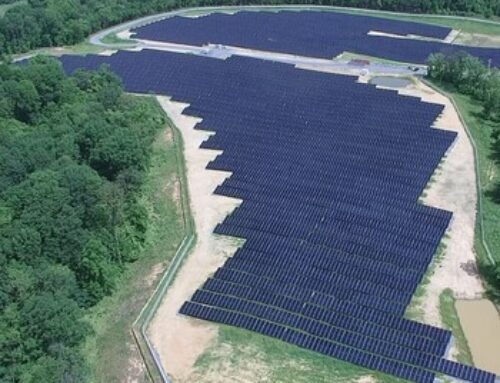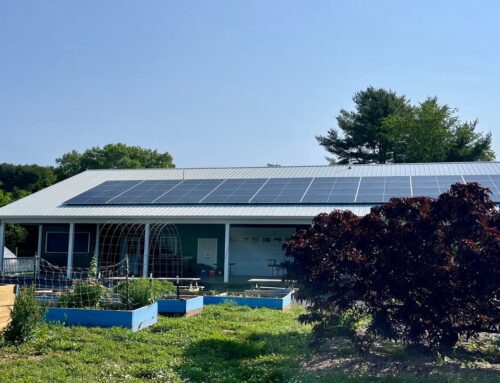Why an Ohio ban on settlements to close ‘base load’ power plants…
June 3, 2025

A decade ago, the Sierra Club and other environmental groups, trade organizations, and companies found themselves in a regulatory standoff with American Electric Power over operating costs for six coal-fired power plants in Ohio.
The utility’s opponents objected to letting the company collect more money from customers to keep the unprofitable plants running, while the utility argued the charges were a hedge against even higher costs.
Before state regulators made a decision, the utility and some of its opponents announced a compromise. As part of the deal, the Sierra Club would drop its opposition in exchange for AEP’s commitment to add more solar and wind to its portfolio as well as move up its timeline for closing or converting several coal plants to natural gas.
A Sierra Club representative at the time described it as “nowhere near a perfect deal” but as one that would significantly reduce carbon emissions and accelerate the state’s clean energy transition.
Such compromises will now be prohibited in Ohio under a new state law that forbids settlements involving the closure of “base load” power plants.
Proponents of House Bill 15, signed by Republican Gov. Mike DeWine in mid-May, say it will support the state’s ever-growing power needs and promote competition within its energy sector.
Yet critics are questioning the law’s definition of “base load” generating facilities: It only covers electricity sources that run primarily on nonrenewable fuels such as natural gas or nuclear. The definition excludes wind or solar power, even when combined with battery storage.
Utility settlements have been a part of regulatory process
Negotiating special deals in settlements has long been common in utility regulatory cases. Industry groups or companies have gotten discounts and other benefits in return for dropping opposition to utilities’ added charges. Parties in court cases often settle before trial, too.
For example, the same year that the Sierra Club reached a settlement with AEP, a trade group representing industrial customers negotiated a special rate with FirstEnergy’s Ohio utilities in exchange for dropping opposition to a customer-funded bailout of that company’s unprofitable coal and nuclear plants. (The secret terms of that agreement were part of a criminal case filed last year against Ohio’s former chief utility regulator, Sam Randazzo. They also became part of a House Bill 6-related regulatory case on which regulators will finally hear evidence this month.)
HB 15 will still allow settlements with special deals, as long as terms are part of the public record, there’s no cash payment, and they do not close or limit “base load” electricity-generating facilities.
Neil Waggoner, who heads the Sierra Club’s Beyond Coal campaign for the Midwest region, suspects the provision is likely a backlash to the environmental group’s 2015 settlement with AEP.
That deal didn’t end up delivering all of the expected clean energy benefits. State rules requiring wind turbines to be a certain distance from other properties ultimately made it impossible for AEP to add the planned 500 megawatts of wind generation, and the Public Utilities Commission of Ohio refused to allow the utility to charge customers the cost of building 400 MW of solar energy.
The “base load” provisions weren’t part of HB 15 as it originally passed the House, nor were they in the initial versions of the companion Senate bill, SB 2. The language appeared in a substitute version of SB 2 introduced on March 11, the same day that Ed Spiker, chair of the Ohio Coal Association, submitted written testimony pleading the state to enact “guardrails to ensure current coal power plants are not forced to close.”
The terms used in SB 2 included natural gas and nuclear in the definition of a “base load electric generating facility” but not renewables. The Senate then added the provisions to HB 15 before passing it this spring.
Law reflects desire to protect fossil fuels and nuclear
The law suggests Republicans’ continuing willingness to prop up conventional power plants, even when their electricity may cost more than cleaner sources of power.
“How would you replace base load power generation, given the amount of megawatts that they produce that we certainly require?” Sen. Jerry Cirino, R-Kirtland, challenged one witness who spoke against nuclear power plants during a March 11 hearing held by the Senate Energy Committee.
Yet electricity from coal and nuclear plants remains relatively expensive, compared to that from renewables or natural gas.
Ashley Brown, a former state utility regulator, questioned the constitutionality of the new settlement restrictions. “I don’t know how they can tell somebody you can’t shut down a plant,” he told Canary Media.
Two weeks ago, the Trump administration ordered a retiring Michigan coal plant to stay open, although it’s unclear whether the mandate will face a court challenge. Separately, regional grid operator PJM Interconnection has sometimes issued orders to keep power-generation facilities running to maintain grid reliability, as it did for former FirstEnergy coal plants. In that case, however, the company was paid to keep the plants open.
Waggoner noted that HB 15’s language only applies to settlements. Its terms wouldn’t stop a company from closing an unprofitable plant on its own accord.
HB 15 also finally revokes subsidies for two 1950s-era coal plants, which had been put in place by HB 6, the 2019 law at the heart of an ongoing public corruption scandal in Ohio. Yet Beth Nagusky, an adjunct law professor at Case Western Reserve University, wonders whether the provision preventing settlements that close “base load” power plants is meant to lay the groundwork for new subsidies down the road for nuclear and coal plants, which might become involved in regulatory or judicial cases.
“I don’t think that’s even being hidden,” Waggoner said. Along the same lines, environmental groups have criticized laws from 2023 and 2024 that include natural gas and nuclear power in the state’s definition of “green energy.”
As Waggoner sees it, utilities and policymakers who claim to be worried about maintaining enough “base load” or “dispatchable” electricity are concerned less about real reliability issues and more about minimizing the importance of renewable energy in the face of climate change, even when renewables are paired with storage.
“They’re looking at how do you frame this argument so you’re not just saying, ‘We don’t want renewables,’” Waggoner said. “They’re trying to find a way to justify what they want, as opposed to what the moment demands.”
read next
Search
RECENT PRESS RELEASES
Related Post




